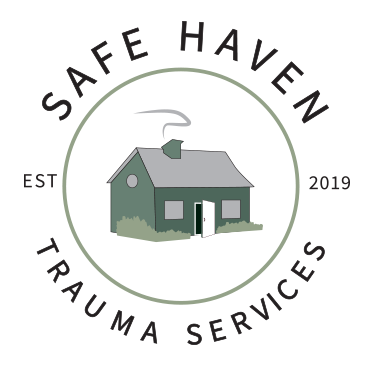Healing Attachment Wounds: The Cure to Anxiety in Relationships
Recently, I’ve noticed a common theme among my clients. Many people are seeking counseling for anxiety around relationships. Why is it that some of us experience extreme anxiety, even panic when we enter into relationships? Such an experience is not uncommon for many of us. This can cause a lot of confusion for both the person experiencing the anxiety and the person on the other side of that anxiety. But maybe the issue goes a little deeper.
During undergrad, I learned about the concept of attachment. At the time, it fascinated me. I even took a whole course on the topic. Many would say that attachment begins forming at conception. From the time we enter our mothers’ wombs we are forming attachment. Based on how our parents or caregivers respond to our needs, wants, and desires, we develop a certain style of attachment. Our attachment style influences how we view the world, ourselves, and others.
In Amir Levine and Rachel Heller’s book, Attached: The New Science of Adult Attachment and How It Can Help You Find—and Keep—Love, they discuss three different attachment styles: anxious, avoidant, and secure. The concept of attachment was coined by John Bowlby, a psychologist, in the 1950s. He suggested that each of us interacts in relationship in one of these three styles. Anxious attachment is characterized by preoccupation in relationships and fear that others will not love them back. While people with avoidant attachment fear that intimacy will lead to a lack of independence and avoid closeness. Then there is secure attachment, where people tend to be caring and loving. These individuals are comfortable with closeness and intimacy. There is also a fourth attachment style, discovered by Mary Main, called disorganized attachment. Individuals with disorganized attachment typically had caregivers that displayed frightened or frightening behavior. The caregivers were both the source of comfort and fear, which can be very confusing to a child. As adults, these individuals typically use a variety of attachment behaviors in attempts to get their needs met, but do not have a clear, consistent strategy like the other three styles.
For many of us, our attachment styles carry over into adulthood. If you have an insecure attachment style, this can cause difficulties in relationships. This is where anxiety comes in. Often times people with insecure attachment styles experience anxiety around relationships. People with avoidant or dismissive attachment styles may experience fear when they feel someone is getting too close. As a result, they may push the other person away or use strategies of distancing to create space between themselves and their partners. But people with anxious or preoccupied attachment styles may experience anxiety around fear of rejection or abandonment. Due to this anxiety, such individuals often cling or engage in behaviors that pull the other towards them. All of these behaviors make sense based on a person’s history in relationships.
The good news is that your attachment style is not fixed. It can change and develop over time based on your experiences in relationship with others. It is possible for one to move from an insecure attachment to earned-secure. Typically, this is not something that happens overnight. According to Amir Levine, the easiest way to move to an earned secure attachment style is to find a secure model. Someone who models secure attachment behavior. This can be a romantic partner, a friend, a mentor, or a therapist.
Based on my experience this is true. I have done a lot of work around my own attachment issues. Although both of my parents loved me as a child and did the best that they knew how, I did not come into adulthood with an earned secure attachment style. Because of this, I had a long history of failed relationships. I often felt intense anxiety when beginning a relationship, while in a relationship, and at the end of a relationship. Through awareness of my attachment style, I started to learn my patterns of interacting with others. I learned how my attachment style influences how I view myself, others, and the world. As I became aware of these things, I learned to avoid relationships that triggered me and sent me into panic. A common problem for both anxious and avoidant individuals is falling into what Amir Levine and Rachel Heller call, the “anxious-avoidant trap.” These relationships have a push-pull feel to them. There is typically a distancer paired with a pursuer. For me this was a common trap.
As someone who did not come into adulthood with secure attachment, I often avoided relationships with secure individuals. Interacting with secure individuals felt “boring” and felt like they lacked “passion.” Through extensive work on myself, including Attachment-Focused EMDR, and increased awareness of my attachment style and patterns, I was able to find a relationship with a secure partner. In this relationship, I have moved to a place of earned-secure attachment. I no longer feel intense anxiety, panic, or fear in my current relationship. Rather I feel calm, comforted, and safe. Coming to this place in my life was truly a journey and it didn’t happen overnight. I made a lot of mistakes along the way, but I learned from each stumble and fall.
As human beings that are wired for connection, we often wonder, “Do you see me?” “Do you want me?” “Will you always be here?” “Am I enough?” These are normal questions to have. If you can relate to the above experiences and are looking to find healing, please contact me at (410) 591-6985 or nataliebowler@safehaventherapy.com and ask about Attachment-Focused EMDR, which helps to address attachment wounds that you may have experienced throughout your life. I am located in Brentwood, TN.
Levine, A., & Heller, R. (2010). Attached: The new science of adult attachment and how it can help you find-and keep-love. New York: Jeremy P. Tarcher.

